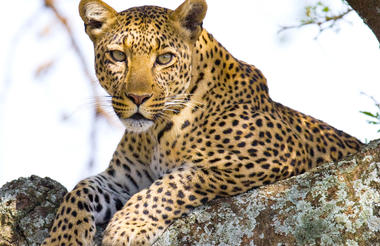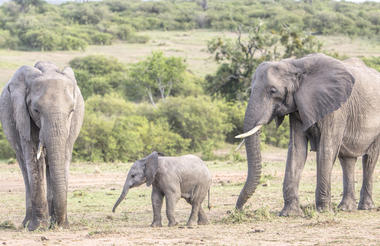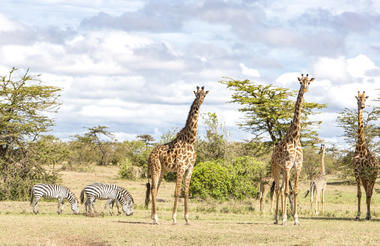Kenya is the most famous destination for safaris in the world for endless reasons, the scenery, the incredible opportunity for viewing all African wildlife in particular the ease in which to see the ‘Big 5’. It is still the best country for adventure travel in Africa; it offers high levels of service; it still offers 'Out of Africa' scenic beauty, diverse cultures and abundant wildlife.
Safari is however, by no means the only reason to visit Kenya, the coastline and tropical beaches are amongst the world’s most beautiful.
Name: The Republic of Kenya
Time Zone: GMT + 3
Capital City: Nairobi, meaning “place of cool waters” in the Maa language
Independence gained on: 12 December 1963 (from Great Britain)
National Language: Kiswahili
Official Language: English
Currency: Kenyan shilling (KES) and cents
Land Area: aprox.586,600km sq
Drives on the: Left
Country Code: + 254
Location
On the Equator on the eastern coast of Africa. Kenya is bordered by Tanzania to the south, Uganda to the west, Somalia and the Indian ocean to the east, Ethiopia to the north and Sudan to the northwest.
Population & People
The population is estimated at 43,500,000 as of 2013.
There are about 52 tribes in Kenya.
Vegetation & Special Natural Features
Kenya is home to the famous Masai Mara game reserve, Mount Kenya and Lake Victoria (the world's second-largest freshwater lake).
The Great Rift Valley, which runs from northern Syria in Southwest Asia to central Mozambique in East Africa, bisects the country from North to South and is dotted with lakes and extinct volcanoes, is one of Kenya's most fascinating physical features.
Kenya’s natural vegetation is diverse. Truly a ‘world within one country’. Tropical rainforests, sandy beaches, snow-capped mountains, desert, wide savannah plains teeming with wildlife, freshwater lakes and salt lakes.
Kalama Community Wildlife Conservancy, an exclusive and collectively-owned 95,000 hectare-large wildlife Conservancy, borders the Samburu National Reserve in Northern Kenya. It also borders Ngutuk Ongiron Group Ranch to the west, Namunyak Community Conservation Trust to the north, and Sera Community Wildlife Conservation to the northeast. Kalama is part of the Northern Rangelands Trust. The Samburu ecosystem is a well-known area in central Kenya comprising of Buffalo Springs National Reserve, Samburu National Reserve, and Kalama Conservancy. The natural environment is arid and semi-arid; open scrub and grasslands with significant environmental variation based on altitude. The area is home to the ‘Samburu Special Five’ – indigenous species only found in this area namely the Beisa oryx, the gerenuk, the Somali ostrich, the Grevy’s zebra, and reticulated giraffe.
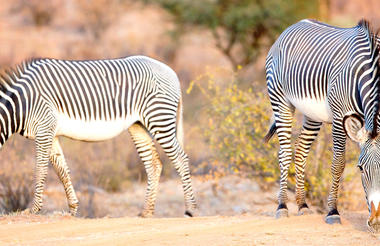
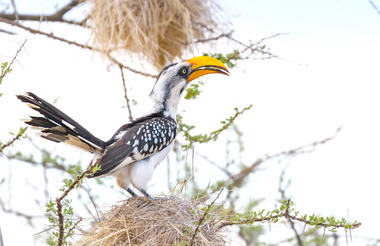

Set against the backdrop of Mt Kenya, Laikipia offers dramatic rocky scenery, open grasslands, basalt hills and dense forests, it is indeed physically diverse and holds the second largest density of wildlife in Kenya after the Masai Mara!
The majority of the conservation occurs on privately and community owned ranches centered round the Laikipia National Reserve. Many of the ranches run cattle as well as wildlife safaris and you can experience conservation that includes, rather than excludes, people going about their day to day lives. Many of the lodges are family homes and despite this domesticity the wildlife includes spectacular game like lion, leopard, buffalo and elephant; as well as terribly rare species such as the black rhino and Grevy’s zebra.
The private lodges in this area offer amazing activities as well as the usual game drives and walks i.e. horse, camel & quad-bike riding; river-swimming and fishing, kayaking, honey collecting etc.
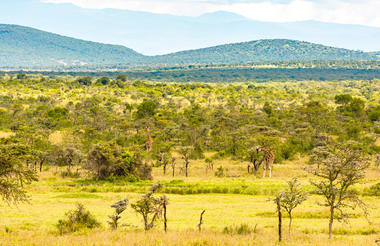
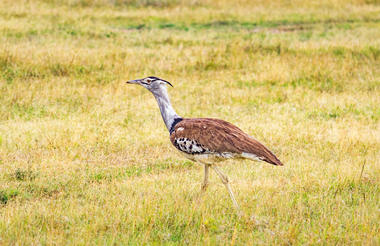
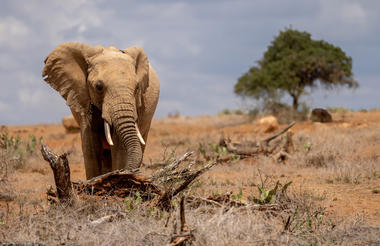
The Olare Motorogi Conservancy is an 85 square km expanse of prime private wilderness in south western Kenya which forms part of the Masai Mara-Serengeti ecosystem and wildlife dispersal zone. The conservancy lies immediately to the northwest of the main Masai Mara reserve. Tourism is limited to a maximum of 94 beds which maximizes the client wilderness experience and minimizes the environmental impact of tourism. Open hills provide a habitat for a diverse range of grazers, including giraffes, zebras, hartebeests and warthogs. These herds attract large numbers of predators, including lions, cheetahs, hyenas and jackals. In between the hills run a number of small seasonal streams, finged by stretches of forest which are home to a broader range of species including baboons, elephants, buffalos, hippos and leopards.
